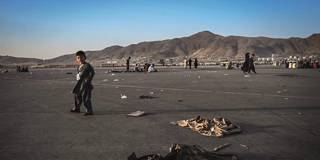In the Sino-American rivalry, the entire Indo-Pacific is in play. As countries across the region grapple with new great-power dynamics and the knock-on effects of America's withdrawal from Afghanistan, the only certainty is that security risks will remain a dominant concern.
NEW DELHI – In Asia today, the economy is global, politics are local, and security is local, regional, and transnational. The Taliban’s rapid return to power in Afghanistan reminded Asians that our security is interlinked. Likewise, the COVID-19 pandemic has raised the question of how to engineer an economic revival for the entire region.

NEW DELHI – In Asia today, the economy is global, politics are local, and security is local, regional, and transnational. The Taliban’s rapid return to power in Afghanistan reminded Asians that our security is interlinked. Likewise, the COVID-19 pandemic has raised the question of how to engineer an economic revival for the entire region.